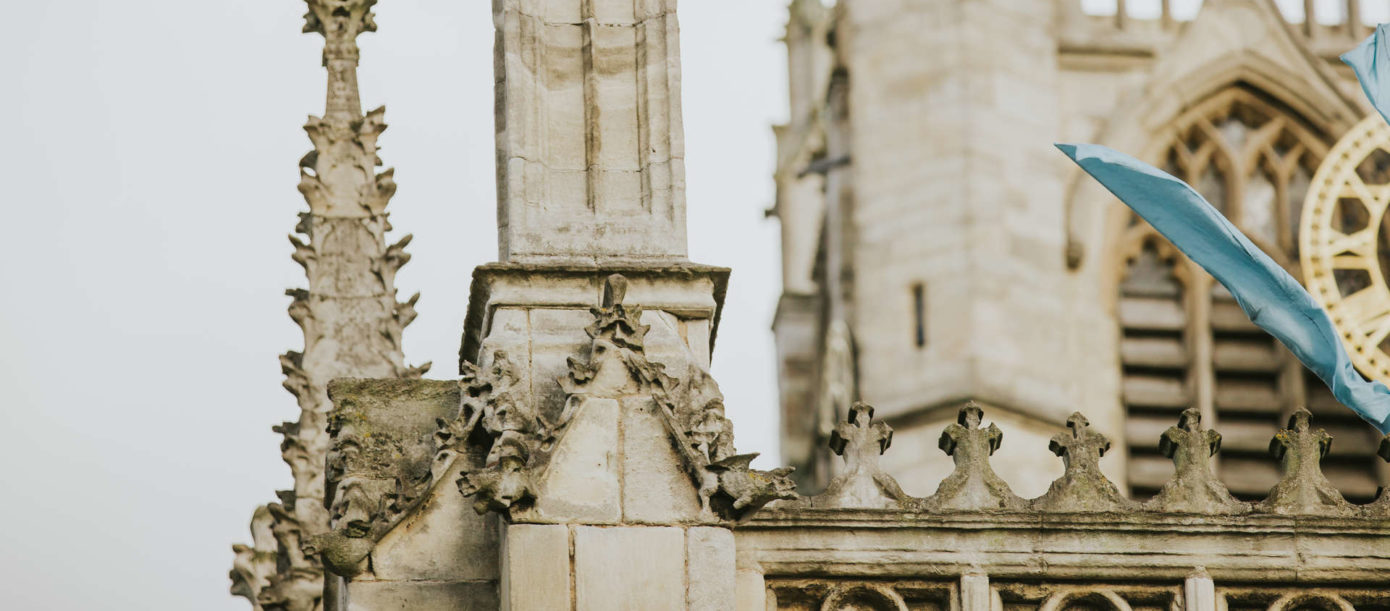Beverley Gate, Trinity Square, Museum Gardens and Wilberforce House – are full of action at the moment, so we thought we’d learn more about these well-loved sites, steeped in Hull’s vibrant history.
Beverley Gate
Beverley Gate was the site of a long stand-off.
We all know that Beverley Gate was the site of the alleged scene that triggered the English Civil War, but did you know how long King Charles I waited at the gate? On 23 April 1642 at about 11am the King arrived, finding the gates ready for an enemy. Although Charles I was denied entry straight away, he waited (in vain) until 4pm. During these impressive 5 hours, he gave Sir John Hotham, Governor of Hull, an hour to make a final decision. It’s thought that during this hour each party took a much-deserved break for refreshments. Never make a decision on an empty stomach.
The old city wall is made from millions of bricks.
When the city’s defences were rebuilt between 1341 and 1404 they used an estimated 4.7 million bricks for the walls alone. If you include the gate this figure is probably in excess of 5 million. This formidable wall, that represented perhaps the largest single use of bricks in medieval England, disappeared when the docks were dug out in the 1770s.
Queens Gardens was once dockland.
It was Hull’s first dock, which followed the route of the old wall. The dock went by a number of names in its time: The Dock, The Old Dock and by 1855 Queen’s Dock, its official title. Imagine – boats would sail past the site of the Maritime Museum, the former dock office building. In 1930 the dock was filled in to make way for Queens Gardens – a remarkable transformation.
Trinity Square
From Trinity Square, you can see 700 years of Hull’s history in its buildings.
The Minster dates from the 1300s and is as old as Hull itself. It’s here that William Wilberforce was baptised!
The Old Grammar School (now the Hands On History Museum) was completed in 1583, and boasts William Wilberforce and Andrew Marvell as alumni, while nearby Prince Street was established in the 1770s, showcasing some of Hull’s finest Georgian architecture. Take a look down Posterngate and you’ll see a glimpse of Princes Quay Shopping Centre in all its modern glory.
Trinity Square has a (recent) past life as a market.
Known to many in the city as Market Place – before the Trinity Square name stuck – the square is remembered for its twice weekly outdoor market, including a stall from Hull favourite Bob Carver’s. Market holders would sell all kinds of wares, including fabric and buttons, clothes, shoes, jewellery and fruit and veg – a one stop shop for a cheap bargain. Alan Pater’s Land of Green Ginger, part of the BBC’s Play for Today series, offers a brilliant snapshot of this area in the 1970s.
Wilberforce House
Wilberforce House is one of the oldest buildings in Hull.
Remembered as the birthplace of Hull’s abolitionist pioneer William Wilberforce, the house as it stands now was built in the 1660s and was originally owned and designed by Hugh Lister, the son of a wealthy merchant. Before becoming a museum, the house had a dual function as both a home and place of business, making use of its location next to the River Hull, a key transportation link for trade.
King Charles I stayed here.
Well, sort of. In 1639 Charles I lodged at the home of Sir John Lister, former Mayor of Hull (and father of Hugh Lister), on the site of what is now Wilberforce House. He commented then that the city was well defended – only 3 years later he would come to Hull’s gates and be denied entry.
It’s the city’s oldest museum too
As early as 1896 there was a campaign to preserve the house as a museum. The building was opened to the public in 1906, with exhibits covering Wilberforce’s legacy, slavery and local history collections. It remains a lasting monument to William Wilberforce and the history of the abolitionist movement.
https://www.instagram.com/p/BYQR6OYA5ux/
Museum Gardens
The gardens feature relics from the blitz.
There are two statues in the gardens that were rescued from the rubble of the old Municipal Museum on Albion Street, which was destroyed by an incendiary bomb in 1943. The statues, one of the Roman goddess of wisdom Minerva, plus one of ‘Science’ and ‘Art’, are fitting reminders of the old museum and its purpose.
You can also find the bust of Gandhi here, unveiled in 2004. Created by sculptor Jaiprakash Shirgaonkar, the bust bears the inscription ‘May noble thoughts come to us from all directions’.
High Street is Hull’s oldest street.
Hull’s original city centre dates back to the medieval period. It was located here so merchants could be close to the River Hull, but its proximity to the river meant the area was prone to flooding. Originally a mixture of merchant homes, warehouses and pubs, the street was (until recently) the only High Street in the UK that didn’t have a single shop.
You can find a monument to activists here.
Inscribed on a wall surrounding the garden are the names of campaigners for human and civil rights causes. Nelson Mandela, Martin Luther King, Abraham Lincoln and Sylvia Pankhurst are all remembered here.
